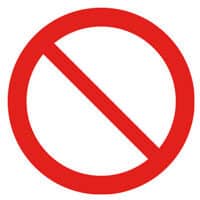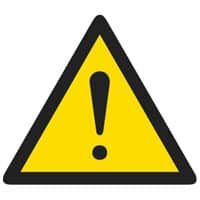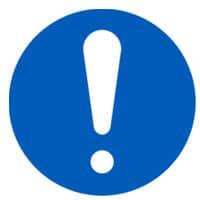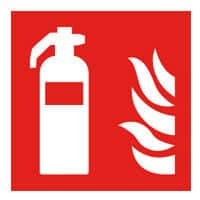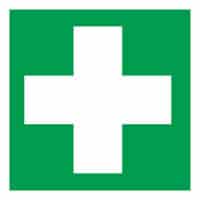Reducing accidents in the workplace is extremely important in all industries, including manufacturing, heavy industry, on construction sites but also important in office-based environments too.
Safety signage is an essential tool in ensuring compliance with specific legislation. Safety signs help create a safe working environment, offering guidance to those in the workplace or workplace area, whether they are members of staff or the general public. This helps protect people and property when unexpected occurrences arise by warning of potential hazards and reminding workers of safety measures and protocols that must be followed.
Aside from providing essential information to ensure safety, modern safety signs are more visually appealing and easier to understand and follow.
The first step towards understanding which signage is required is to undertake a risk assessment. Identifying potential hazards and risks posed to people working or visiting your site is paramount. According to the Health and Safety (Safety Signs and Signals) Regulations 1996, employers are required to use adequate safety signage where there is a significant risk to health and safety.

Each work area might require different workplace health and safety signs and symbols. This is because each work area can have a plethora of different hazards. A risk assessment of each activity or designated area will help identify hazards. Appropriate actions for ensuring safety can then be drawn up and selecting the appropriate safety signs can then be selected. Where possible safety signs are shown to be changed (at least their location) to keep the safety message fresh and to avoid “sign blindness”.
Safety signs and symbols consist of messages, words and pictorial symbols with a variety of sizes, shapes and colours. All the shapes and colours are standardised. Each shape has a different meaning, and each colour reflects a specific meaning.
Safety signs and symbols are important safety communication tools, indicating various hazards that are present in plant sites or workplaces. Effective signage warns workers to watch out for hazards by giving required information and safety instructions, increasing safety awareness.
Read our blog Sign Blindness: What is it and How can it be Avoided?
Once the relevant signage is in place, there is a legal duty for companies to maintain safety signs and ensure that employees receive correct instructions and training on what the safety signs mean and the measures that must be followed.
A quick guide to safety symbols
Click the images to view the signs in our web shop
Prohibition
A red circular band with a diagonal crossbar on white background, the symbol within the circle to be black denoting a safety sign that includes a certain behaviour is prohibited.
Hazard
A yellow triangle with a black border and a symbol in yellow denoting a safety sign that gives a warning of a hazard.
Mandatory
A blue circle with a white symbol denoting a sign that indicates that a specific course of action must be taken.
Fire Equipment
A red rectangle or square with a symbol in white denoting a safety sign that indicates the location of the firefighting equipment.
Safe Condition
A green rectangle or square with a symbol or text in white denoting a safety sign providing information about safe conditions.
Safety Signs are crucial in any work environment. The primary importance of displaying them is to prevent injury and ensure staff and visitors are aware of the possible dangers and hazards in certain situations and/or environments. Whether you require permanent signage to notify people of prohibitions, warnings, and mandatory requirements or for locating and identifying emergency escape routes and first-aid facilities – there is a Stocksigns solution for you!
